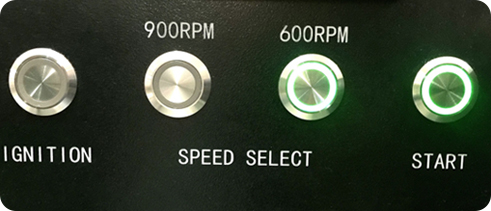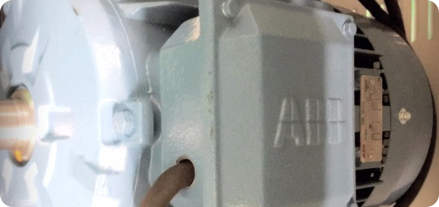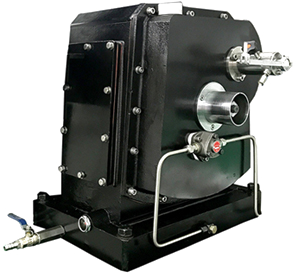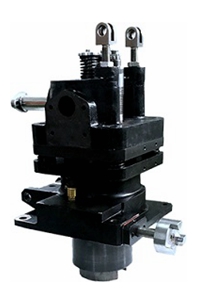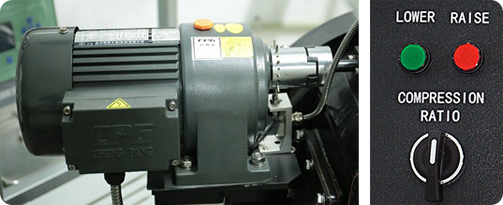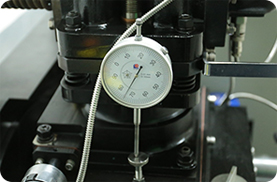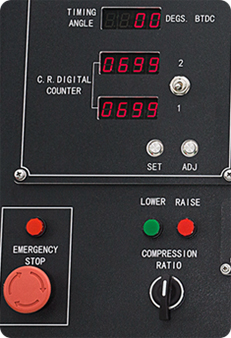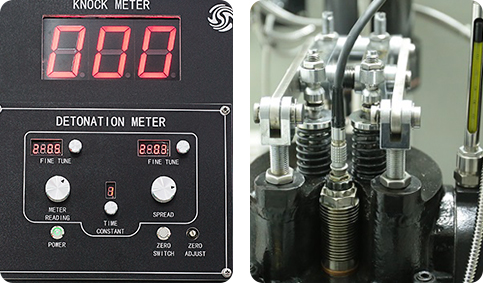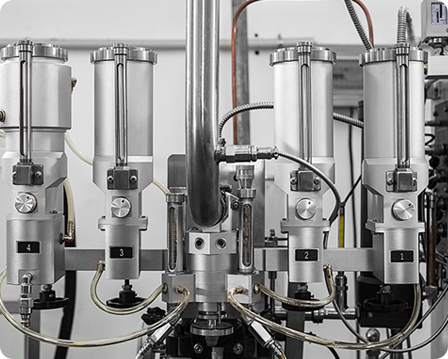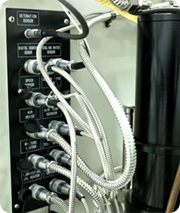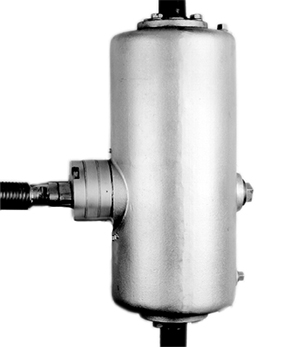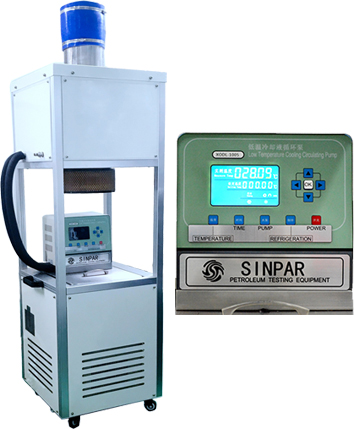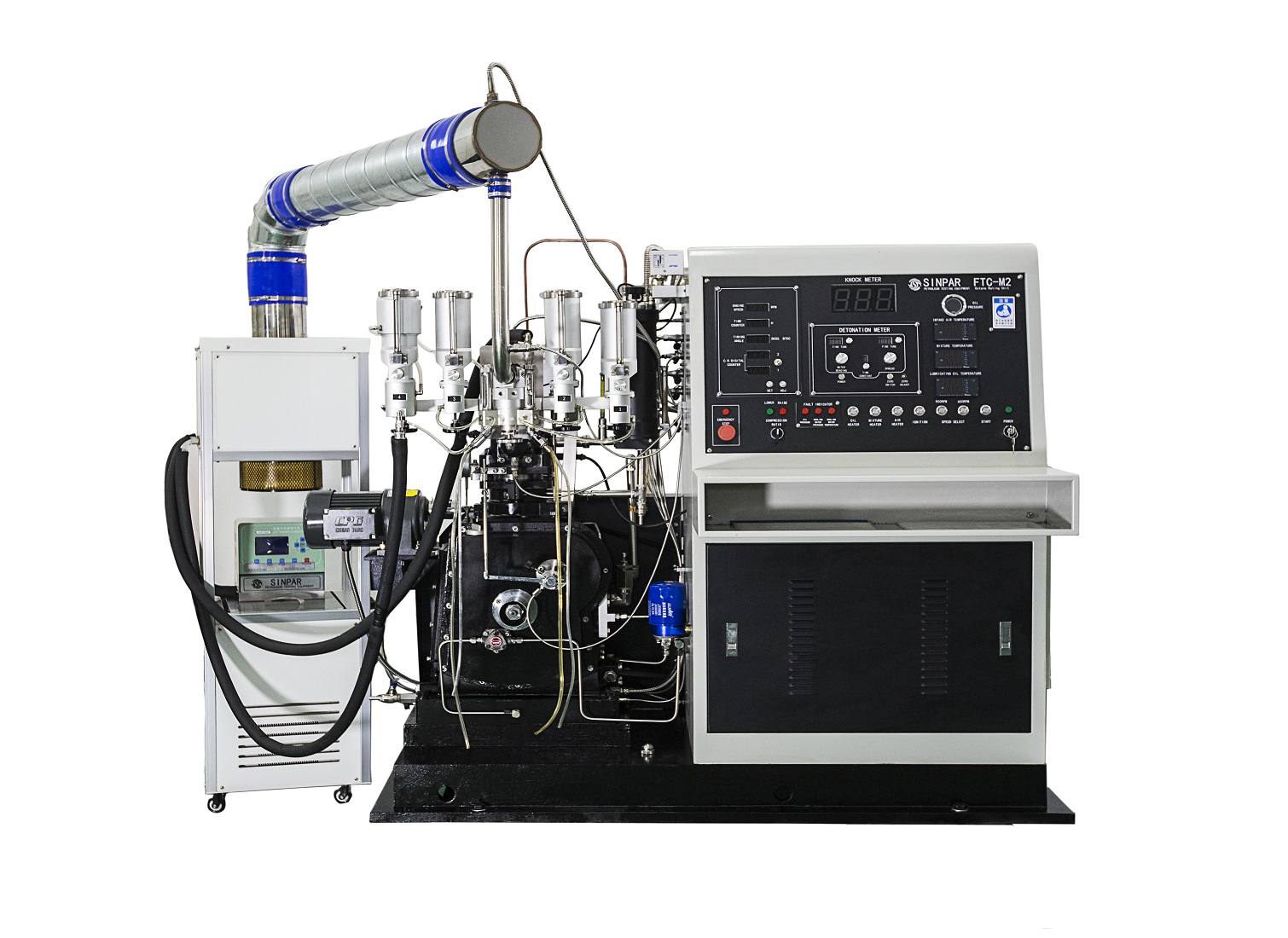
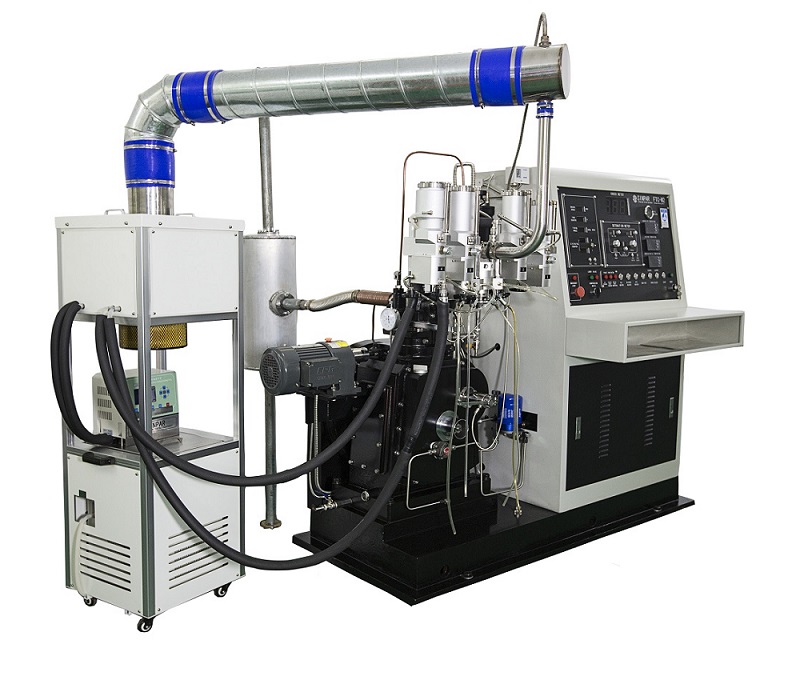
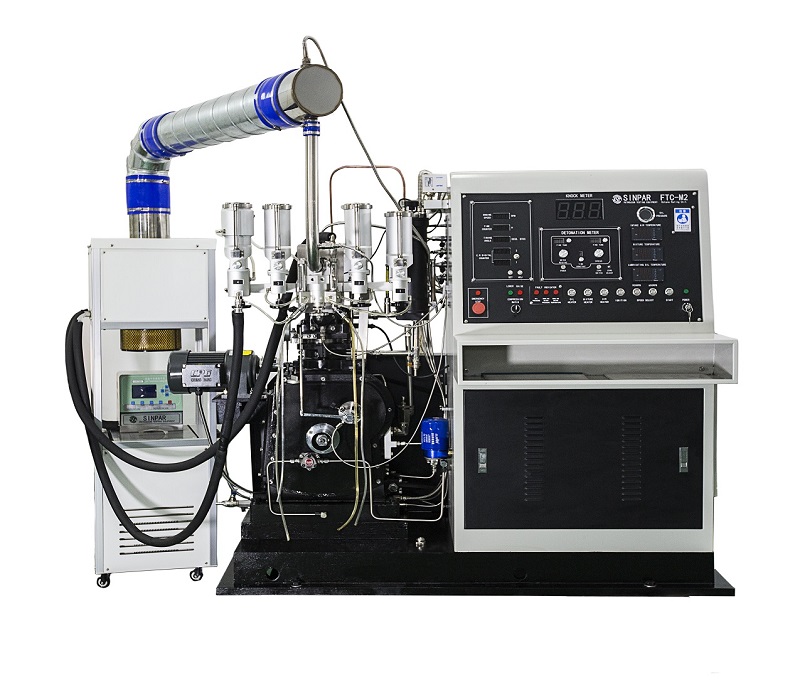
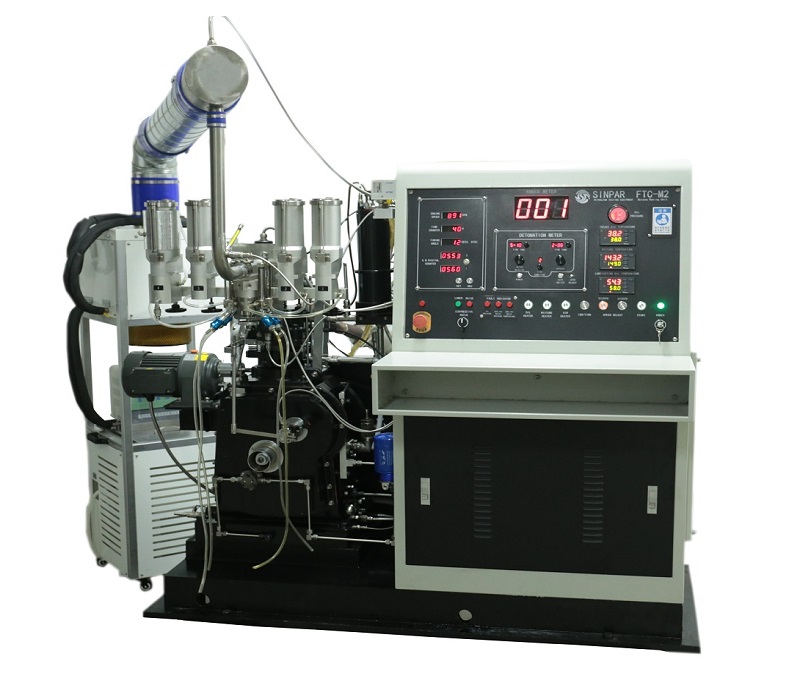
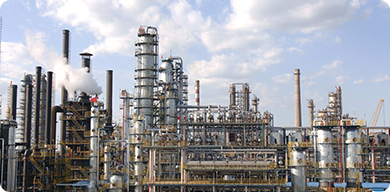
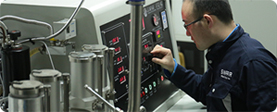
|
Research Method (ASTM D2699) |
Motor Method (ASTM D2700) |
|
Engine Speed: 600 RPM +/- 1% |
Engine Speed: 900 RPM +/- 1% |
|
Spark Timing: 13° BTDC |
Spark Timing: Variable Based on Cylinder Height |
|
Intake Air Temperature: 52°C±1°C |
Mixture Temperature: 149°C±1°C |
|
Jacket Temperature: 100°C±1.5°C |
|
|
Oil Temperature: 57°C±8.0°C |
|
|
Oil Pressure: 25-30 PSI |
|
|
Intake Humidity: 25-50 grains of moisture/lb. of dry air |
|
|
Power Supply: 380V/440V 50Hz/60Hz, 3Ph |
|
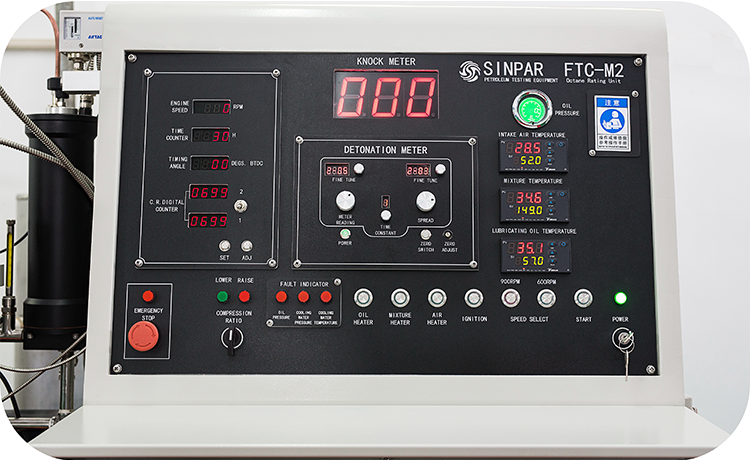
|
Basic Information |
|
|
Standard |
ASTM D2699 RON, ASTM D2700 MON |
|
Working Range |
40-120 octane number |
|
Operation Conditions |
|
|
Engine Speed (Motor) |
900±9 rpm |
|
Engine Speed (Research) |
600±6 rpm |
|
Ignition Timing (Motor) |
Variable as Cylinder Height (C.R.) is Changed (Basic Setting 26° at 5:1 C.R.) |
|
Ignition Timing (Research) |
13° BTDC |
|
Intake Air Temperature (Motor) |
38°C±2.8°C |
|
Intake Air Temperature (Research)*1 |
52±1°C at Std. Barometric Pressure, |
|
Intake Mixture Temperature (Motor)*2 |
149°C±1°C |
|
Cylinder Jacket Coolant Temperature |
100°C±1.5°C |
|
Crankcase Oil Temperature |
57°C±8°C |
|
NOTE:*1 See ASTM D2699 for details. |
|
|
NOTE:*2 See ASTM D2700 for details. |
|
|
Engine Information |
|
|
Compression Ratio (C.R.) |
4:1-18:1 |
|
Cylinder Bore (Diameter) |
82.55 mm (Standard) |
|
Stroke |
114.30 mm |
|
Carburetor Venturi (Research) |
14.30 mm |
|
Intake Valve Clearance (Hot) |
0.20 mm±0.025 mm |
|
Exhaust Valve Clearance (Hot) |
0.20 mm±0.025 mm |
|
Intake Valve Opens Timing |
10°±2.5° ATDC |
|
Intake Valve Closes Timing |
34° ABDC |
|
Exhaust Valve Opens Timing |
40° BBDC |
|
Exhaust Valve Closes Timing |
15°±2.5° ATDC |
|
Crankcase Oil Pressure |
172 kPa - 207 kPa |
|
Function Information |
|
|
Compression Ratio Adjustment |
Motor-Driven |
|
Compression Ratio Display Device |
Dual-Indicator & Digital Counter |
|
Engine Speed Conversion |
Dual-Speed Motor |
|
Carburetor |
Four-Bowl (with a cooling function) |
|
Ignition Timing Display |
Digital (Auto-Set) |
|
Oil Pressure Control |
Yes |
|
Crankcase Oil Heater |
Yes |
|
Water Pressure Control |
Yes |
|
Air Humidity Control System |
Yes |
|
Unit Safety System |
Yes |
